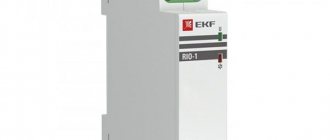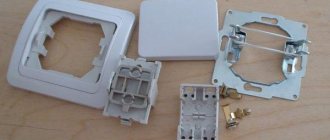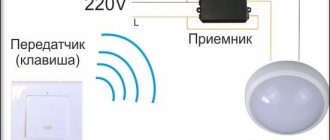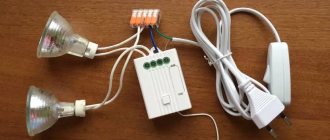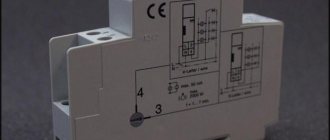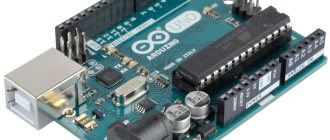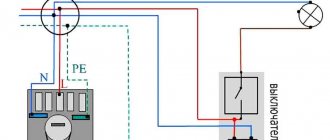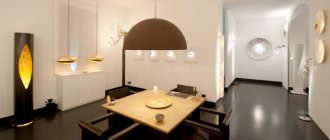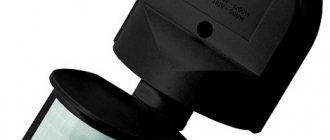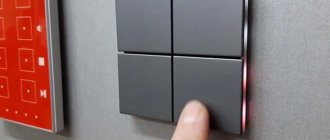Internet of Things technologies are increasingly being used to control lighting, allowing you to use any mobile device instead of a remote control. Until recently, a significant disadvantage of such systems was the need to contact highly qualified specialists for installation and configuration. This is not just high costs, but also the inability to quickly change the configuration of devices in the house. Everything changed with the advent of the TUYA platform, developed by a startup from Southeast Asia. When implementing “smart home” systems based on it, the installation of equipment can be carried out by the most ordinary electricians, and the setup is so simple that it is accessible to an ordinary user who does not have special training.
The Arlight brand, which has been offering the market high-quality and innovative solutions for many years, could not ignore such convenient technology and released a series of Arlight TY equipment that supports the TUYA platform.
Basic provisions
The TUYA platform is based on cloud technologies. A mobile device (smartphone or tablet) connects to the Internet via Wi-Fi and connects to a cloud service, which takes care of the main setup and configuration of the system. A special application is installed on the mobile device. The user selects a scenario or a single command, the signal is transmitted to the cloud. The cloud service already determines which actions need to be launched on which devices.
The creators of the platform declare that it supports a large number of communication protocols. But the developers of the Arlight TY series equipment chose only two of them - Wi-Fi and Bluetooth. This approach simplified the installation of equipment and reduced the overall cost of the proposed solution.
Some devices connect to an access point implemented using a home router directly via Wi-Fi. But managing all smart home devices only via Wi-Fi is difficult, if only because the number of simultaneous connections to one access point is limited. This is especially true for lighting control, since a home typically has more lighting fixtures than can be supported by a single residential access point.
Therefore, Bluetooth Mesh technology, supported in Bluetooth protocol version 4.0 and higher, is widely used to control smart home actuators. This technology is characterized by the fact that the same device operates both as a signal receiver/transmitter and as a bidirectional repeater. In this case, individual devices automatically self-organize into a network with intelligent routing of transmitted information.
If communication along a direct path between two network nodes is impossible due to high signal attenuation or strong interference, information is transmitted along one of the bypass paths. This function is important for modern buildings, literally crammed with all kinds of radio-electronic equipment that creates interference.
The converter is designed to interact with Bluetooth devices. It connects to the Internet via Wi-Fi and interacts with actuators via Bluetooth. In addition, devices that support Bluetooth Mesh can be controlled directly from a mobile device.
Economy and savings
Modern lighting technologies are economical, but the cost of installing them sometimes deters buyers.
In order to design “smart light”, it is not at all necessary to invest millions of rubles in apartment renovation. If you are ready to replace some expensive components (for example, American Crestron control panels) with cheaper analogues, then, say, installing an automation system for lighting and curtains in a small apartment will cost 150 thousand rubles. By paying another 15–20 thousand rubles, you can add protection against leaks and a simple security system (motion sensors and door contact). Thus, together with cable work, the final price tag will be about 200 thousand rubles.
Photo: domotix.pro
The Loxone controller can also be controlled using wall-mounted rocker switches. In this case, there is no need to bind to any communication protocol; it is permissible to use any switches
Intelligent Arlight App
To configure equipment, set scenarios and control actuators, you need to install the free Intelligent Arlight application on your mobile device. iOS and Android operating systems are supported . After downloading the application, you need to register in the cloud service using your mobile phone number or e-mail address.
The free Intelligent Arlight application has a user-friendly interface that is intuitive for users without special training
The next step is to describe the house. How many rooms does it have, which users, besides you, can control the equipment? It is possible to control several houses at once from one mobile device.
Then we move on to setting up equipment controlled via Wi-Fi. When setting up the lighting control system, the mobile device with the application installed on it is switched to access point mode. Actuators are searched automatically, but, if necessary, their functional purpose can be specified manually. The smartphone or tablet must be close enough to the actuator so that stable communication is maintained between them. On your mobile device, enter the access password to the local Wi-Fi point through which you connect to the Internet. This password is transmitted to the actuator, after which it can automatically connect to the access point.
Bluetooth Mesh devices are very easy to add. If the device is equipped with a key switch, you must press it and hold it for 10 seconds. If there is no switch, you will need to turn the power supplied to the actuator on and off three times. The equipment will be automatically recognized and added, you just need to indicate in which specific room it is located.
After adding devices, you can proceed to grouping them and setting scenarios. These actions are carried out through an intuitive user interface.
The Intelligent Arlight app shows sunrise/sunset and current weather conditions for your area. The application also receives weather data from weather services via the Internet. This is not just a nice addition, but a means of implementing so-called smart scenes. Astronomical relays for lighting control are a thing of the past - a smart system knows when the sun rises and sets in your area today. This function also allows you to control smart home elements, including lighting, depending on weather conditions. Lighting may turn on early in cloudy weather. We especially emphasize that to implement this type of function, you do not need to additionally connect any devices or program. It is enough just to indicate the conditions upon the occurrence of which certain actions are performed.
Lighting systems in the “Smart Home” - features
This control segment is called “Smart Light”, it refers not only to lighting, but also to the means of its control and management. Also, sockets are often included in the system so that their operation can be monitored. LED or fluorescent lamps are most often used as light sources - the safest and most economical ones today. As for the features, they are:
- The equipment is controlled by on/off relays, microcontrollers, sound and motion sensors and other components that help regulate lighting.
- You can use all functions separately, or you can create scenarios according to which separate groups of devices will work. This simplifies management and reduces setup time.
- You can turn elements on and off in different ways; it’s easy to find an option for any user.
System control panel in the house. - The system not only turns the lamps on and off, but also adjusts their brightness, which allows you to adjust the light to the way that is most convenient.
- You can set up energy-saving modes to reduce electricity consumption and automatically turn off the lights if no one is in the room for a long time.
- If necessary, the presence mode is turned on if the residents have left for a long time: the lights will turn on in different rooms in the evening, simulating that there is someone in the house.
- It is possible to set the light to turn on in the morning to use it as an alarm clock.
By the way! Many people note the convenience of the “turn off everything” function; when leaving the house, you can stop the supply of electricity to all lamps and sockets with one click and not have to worry about whether the iron is turned off. The main thing is not to include in the system sockets that power the refrigerator and other equipment that must work constantly.
Wi-Fi equipment
At the time of writing, devices with Wi-Fi control were represented in the Arlight TY series by the TY-501-DIM-WF-SUF dimmer, as well as the TY-701-WF-SUF and TY-706-WF-DIN relay modules. All of them are designed to control equipment with a supply voltage of 230 V AC.
The TY-501-DIM-WF-SUF dimmer is designed for a load of up to 1 A. The peculiarity of this dimmer is that it is assembled on a modern element base - MOSFET transistors, which ensures high technical characteristics. But at the same time, like a conventional TRIAC dimmer, it works with phase cutoff. This feature ensures compatibility with most models of dimmable lamps, including LED ones.
The TY-701-WF-SUF relay module has one switching channel, the load current can reach 5 A.
TY-706-WF-DIN relay module can control load via 6 channels
The most complex actuator is the TY-706-WF-DIN relay module. It has 6 switching channels: 2 with loads up to 16 A and 4 with loads up to 10 A.
This module can be placed on a DIN rail. For operation at a considerable distance from the access point, as well as inside a cabinet with equipment, the walls of which weaken the signal (but there should still be a dielectric window, for example, made of glass), a whip antenna with adjustable orientation is provided. In addition to Wi-Fi, the TY-706-WF-DIN relay module supports control via the MODBUS interface. A description of this feature is beyond the scope of this article.
Wired or wireless smart switch?
If you've decided that smart light switches are your best choice, you'll need to determine whether or wireless option .
A wireless switch makes sense if you are renting. You won't need to do any work on the wiring and switching that's already installed. Many smart switches come with a magnetic mount, meaning you don't even have to physically mount it to the wall. While the selection of wireless switches is limited, there are still options from major industry players.
If you are a homeowner, wired smart switches require replacing your current switches. In return, you will be rewarded with a fully integrated lighting control method.
Circumstances often dictate whether you choose wired or wireless smart light switches. There is no right or wrong answer, just whatever works best for you.
Converter
In the Arlight TY series, the converter category is currently represented by only one model - TY-804-WF-SUF. Small dimensions (65x65x15 mm), as well as power supply from a 5 V voltage source (you can use regular charging with a USB connector) allow you to place it in any convenient place.
In addition to the two-way conversion of control signals between Wi-Fi and Bluetooth interfaces, the converter allows you to implement the simplest automation functions for controlling actuators via Bluetooth without resorting to a cloud service. These include timer control, simple scenarios, etc. Essentially, the TY-804-WF-SUF combines the functions of both a converter and an entry-level controller.
Application of RF Interface
Through the RF interface (433 MHz), the above-described converter and relay module can directly receive control signals from the TY-228-1-RF-SUF, TY-228-2-RF-SUF and TY-228-3-RF- key switches SUF. They allow you to implement lighting control via radio channel.
Wireless rocker switches (right) can transmit control signals directly to the relay module using an RF interface
These key switches do not require power from a built-in battery or mains power. The energy to operate the radio transmitter is generated when a key is pressed.
Using technology to furnish office space
Creating comfortable and safe working conditions for their employees is the responsibility of all employers. High-quality lighting is an integral part of such events. Payment of energy costs is the main and most important expense item for large, bright office premises. Managing a smart lighting system allows you to save almost half of the amount of previous payments.
The beneficial effect of a comfortable and productive state of the team and a good psychological environment can be ensured by proper lighting.
